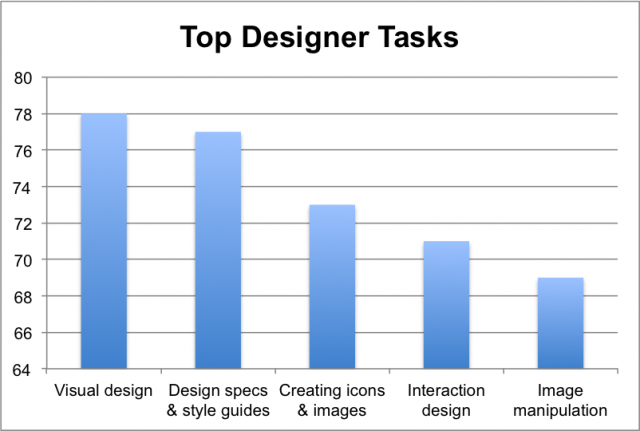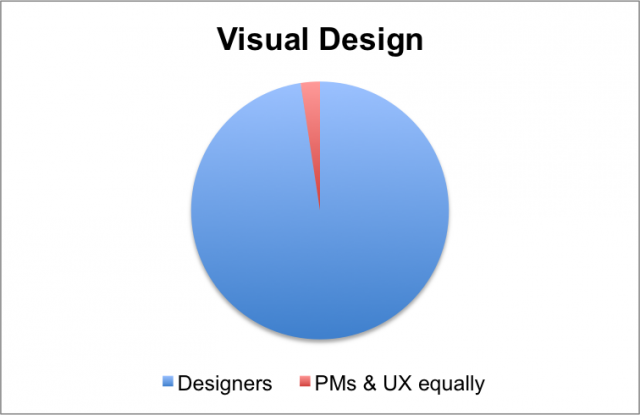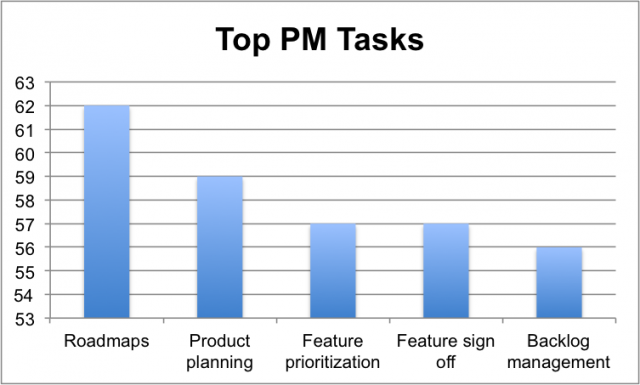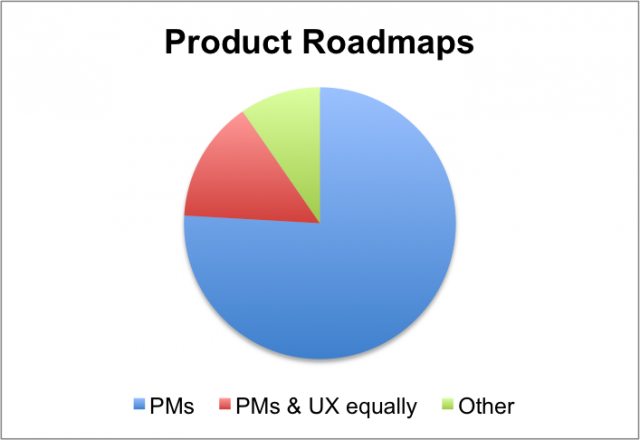-
What we learned from Laura Klein’s AMA
Posted on
 During our “Ask Me Anything” with Laura Klein, author of Build Better Products, we touched on subjects ranging from how to define “agile,” whether “scope creep” is something we should really consider a mistake, to recommendations around how to scale an agile team. Read on for a recap of the session, and please join our Slack here to stay informed about when our next #rm-chat author AMA will be!
During our “Ask Me Anything” with Laura Klein, author of Build Better Products, we touched on subjects ranging from how to define “agile,” whether “scope creep” is something we should really consider a mistake, to recommendations around how to scale an agile team. Read on for a recap of the session, and please join our Slack here to stay informed about when our next #rm-chat author AMA will be!
Q: Scope Creep is what you call a product choice that was a mistake, yet in every other scenario we would call it Innovation and Entrepreneurial. How do we manage that risk and maximize the possibilities? -Arpy D.
A: Thanks for the question. I’m sorry, but I’m going to have to argue with your framing here. I don’t think Scope Creep is a product choice that was a mistake. I think Scope Creep is what happens when we don’t really understand the specific thing that we’re building and we keep just adding things onto it. That has nothing to do with innovation in my opinion. Some of the most innovative products are very small and well scoped. Also, scope creep was specifically more of a pre-agile thing when features were 100% scoped and estimated ahead of time. Then, when we did a bad job of that (as we always did because it’s hard), we would start saying “oh, actually, it also needs to do x” and “oh, now that it does x, it won’t work without y”. Again, that’s not innovation. That’s just bad planning.
Q: What advice and/or book recommendations do you have on scaling product teams and ensuring they remain agile? Also, I saw you recently tweet about design in agile teams. Aside from your article any other recommendations on this topic? – Cynthia C.
A: The trick is that you need to be outcome driven for each of your teams so that teams can remain semi-autonomous. You also need to have a strong commitment to iteration. The thing I’ve learned from research on this is that There is no Agile! There are a lot of models to this. There’s the team of teams and dual track and scrum vs kanban and guilds/squads, etc.
Q: Do you have any insights or advice around how designers can work better on agile teams?
A: I’ve been doing a ton of research on this.The extremely UX answer is that it depends. It turns out that when people talk about “agile” it actually can mean one of about a dozen different things, none of which are really terribly agile. Frequently, people introduce Agile because they just want to go faster, which can be really exhausting and burn-out-inducing for designers and researchers.
If you read the Agile Manifesto, it’s not that complicated. The problem is that it is very high level, and it comes out of a bunch of competing methodologies that have very specific instructions and rituals, and those often get very confusing (ie. kanban vs scrum).
Q: Do you see any reason not to go dual track? -Ben M.
A: Sometimes! First of all, I’ve found at least three different in the wild interpretations of “dual track” which makes this a hard question to answer. A lot of dual track seems to be aimed at developing (and validating) biggish new features. It’s probably overkill if what you need are small, incremental improvements, which is actually true of a lot of products. You also have to be careful that you don’t split things up as “this team gets to do cool new innovative stuff and this other team has to maintain our crappy legacy system!” But that’s more about your particular implementation of it, rather than saying you should or should’t use it. If you do use it, use it responsibly for the things it’s good for. The different types of dual track I’ve seen, by the way, are the ones where there’s a team that’s actually focused on discovery of new opportunities and testing out more risky new things vs one where ux and research are all on the first track. That second one is AgileFall, not dual track.
AMA with Laura Klein, Author of Build Better Products
Posted on
Join us on Slack for an “Ask Me Anything” with Laura Klein, author of Build Better Products. She’ll be answering your questions live on Tuesday, November 10 from 2-2:45pm EDT in our #rm-chat channel. Join our Slack here.
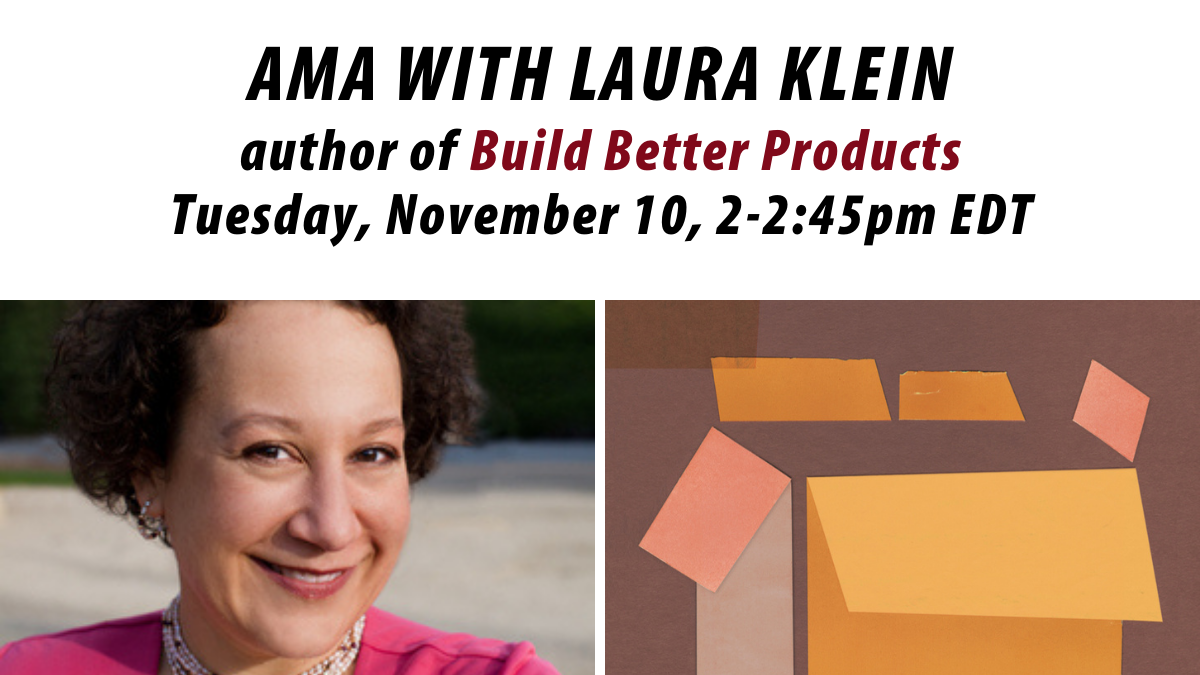
New Book Out Today: Laura Klein’s Build Better Products
Posted on
Happy book launch day!
It took months of cajoling but I talked Laura Klein into writing Build Better Products: A Modern Approach to Building Successful User-Centered Products. And guess what–she delivered.
Build Better Products is a comprehensive handbook for anyone designing or managing products. It provides easy-to-follow exercises and methods to improve products in six critical areas:
- Goal: Defining the key business need
- Empathy: Understanding user behaviors and needs
- Creation: Designing a new user behavior to meet both business and user needs
- Validation: Identifying and testing assumptions
- Measurement: Measuring changes in user behavior
- Iteration: Doing it again and again–improving each time
This framework—and the advice it delivers—is hugely practical and applicable for just about any product. The more complex your product, the more you need this book. Laura addresses another key need: bringing together the best of product management and user experience design in one place.
And there are two other reasons to pick up a copy of Build Better Products:
- Tricks of the trade from a stellar lineup: Cindy Alvarez, Janice Fraser, Learie Hercules, Avinash Kaushik, Amy Jo Kim, Steve Krug, Dan Olsen, Steve Portigal, Chris Risdon, Kate Rutter, Teresa Torres, and Christina Wodtke.
- It’s funny. Really funny. That’s why I spent all those months cajoling her. You’re very welcome.
I hope you’ll pick up a copy of Build Better Products. Buy it from us (in paperback, MOBI, ePUB, PDF, and DAISY formats). Or buy it from that Bezos guy. Let us know what you think!
Product Teams – Who Does What?
Posted on
When we started talking about putting on the PM + UX Conference, the first thing we asked was, “What sorts of things should we talk about?” Since the folks at Rosenfeld Media are, not surprisingly, extremely user-centered, the obvious answer was, “We’re not sure. How about we do some research and find out what questions our attendees might have?” So we did.
The most interesting thing to me was that a lot of the questions people asked boiled down to “Who does what on a product team?” This was curious. I mean, we’re all working on product teams or we’ve worked on them in the past, right? Shouldn’t we know what our jobs are? Shouldn’t we know what everybody else is doing? Well, yes! We should! And yet… when I started to dig around and have conversations with people, I got very, very different answers about how things really worked.
That was odd. It turned out that, although we all have job titles like Product Manager or UX Designer, many of us have very different ideas about what it is that we’re supposed to actually do all day. Do designers talk to customers? What about PMs? Who decides what features go into a product? Who makes wireframes? Does anybody do usability testing? If not, could they please start?
Like any good team faced with more questions than they started with, we did some more research. Ok, first we had a couple of stiff drinks. Then we did some more research. I was volunteered to lead the way.
The Research Methodology
I wanted to make sure that we hadn’t gotten weird data or misinterpreted the questions being asked- after all, it was a survey – so I conducted several qualitative interviews with PMs and UX designers in various sized organizations. I asked about what PMs and UX designers did at their companies. Incidentally, I also got a lot of “but the way we SHOULD do it is…” answers, but I was focused on reality for the moment. And reality seemed just as confused as the survey results.
After talking to a dozen or so people, I decided I wanted to collect exactly what tasks were performed at different companies so that we could see how much overlap existed. To get as many data points as possible, I sent out a very simple survey asking people what their role was, which tasks they thought were performed by UX Designers and which tasks they thought were performed by PMs.
I got dozens of responses from people on different product teams–mostly UX, PM, and researchers–and even some engineers, marketers, founders and managers. Of these responses, I got hundreds of different things that are being done by product teams.I am not exaggerating. It seems that PMs and designers are performing a dizzying array of tasks from generative research to making roadmaps to managing stakeholders to visual design.
I got curious. Who on these teams are doing all of these things? Seriously, most product teams just aren’t that big, so how do they get hundreds of things done? Who’s got that kind of time?? I narrowed down all the responses by deduplicating things that were similar. I picked the things that were mentioned the most, narrowed it down to 73 discrete tasks or processes–which is still a LOT of things for a team to be doing.
Next, I did a card sort: I asked people to review each task and tell me whether it was mostly done by designers, mostly by PMs, done about equally, or generally done by nobody or somebody besides these. I also said you could make your own categories for things that didn’t fit.
I ran the card sort remotely using OptimalSort, which was handy, since that meant that I could gather a lot more input than if I’d had to travel around with a set of index cards and watch each person do the sort. It also made it a lot easier to categorize, and you’ll see in just one second why that was important.
The Research Results
82 of you weighed in with how things worked at your company. And, surprise surprise, there was virtually no agreement. I mean, there were a few similarities. Everybody agreed that visual design was done by someone in the design department (except for those of you who said it was done by outside people or people in marketing). And almost everybody agreed that roadmaps were made by PMs. Or by execs. Or by managers. Or by someone else.
Oh, and nobody agreed about who was supposed to do user research, except that a lot of people made a category called something like “things we aren’t doing enough of” and stuck user research into it. So, that was fun.
Here are a few of the things people actually agreed on mostly.
What Are Designers Doing?
Interestingly, there was far more agreement about what designers do than about what product managers do across companies.
Visual Design
The most agreed upon tasks were things like visual design, design specs and style guides, image manipulation, illustration, and branding. Almost everybody agreed that these were mostly done by designers.
The unfortunate part about this particular agreement is that, while it’s true that these are more “design” tasks than they are “product management” tasks, it tends to confirm the idea that many organizations still see design as limited to visual design.
Interaction Design
It has “design” right there in the title, but 10% of the respondents said that interaction design is done equally by product managers and designers, and one sad person said that it’s not being done at all.
Other Mostly Design Tasks
Other tasks that were mostly done by designers were what you might expect:
- Mockups
- Wireframes
- Sketching
- Site Maps
- Information Architecture
Interactive prototypes were also very high on the list of tasks mostly done by designers, although at a few companies they’re still being made by engineers or developers. This may reflect the huge number of new prototyping tools available these days.
What Are PMs Doing?
There was a lot less agreement across companies about what PMs were doing, frankly.
Roadmaps
The most agreed upon task for product managers was creating and maintaining feature roadmaps, with 63 people saying that this was almost always done by product managers. In twelve cases however, roadmaps were maintained equally by designers and PMs, and in six cases, they’re being made by someone else or not being made at all. Project and program managers are sometimes the keepers of the roadmap, but very infrequently.
Feature Definition, Business Strategy, and Scheduling
Many of the most common product management tasks, unsurprisingly, are things that involve defining and prioritizing features, creating revenue models, or project management and scheduling tasks like sprint planning.
But there were really only a few of these tasks where more than half of the respondents agreed that they were done mostly by product managers and there were no tasks where more than three quarters of the respondents agreed were all or mostly done by product managers.
Business strategy, for example, was reported to be done primarily by PMs in only 50 of the 83 cases. In five cases, it was done equally by PMs and Designers and the rest of the time was done by anybody from executives to finance to nobody at all. In one case, the entire team worked together on setting business strategy.
What are People Doing Together?
The most inspiring part of the study for me was how many tasks people are doing together – either as a whole, cross-functional team, or at least across the PM and Design roles.
In 13 cases, the entire team reported brainstorming new features together, and in 51 cases, brainstorming was done about equally by PMs and UX designers. Hopefully that means that more people are getting involved in figuring out which new features to build for users.
Perhaps the most evenly split task was customer discovery, which worked out like this:
- Mostly designers: 17
- Mostly product managers: 17
- Equally by PMs and designers: 20
- Not done: 15
- Other: 16
I don’t like to see customer discovery not getting done almost 20% of the time, but it’s good that when it’s happening it’s a shared task. Needs finding had a similar split, as did most forms of generative research. At least, when user research is getting done, it’s getting done by the whole team rather than being entirely run by one group.
Why Does this Matter?
Having a shared understanding of what we do and what we’re supposed to do is hugely important to creating a well-functioning team. Imagine trying to build a baseball team where nobody agreed on what shortstops were supposed to do or what made somebody a great pitcher. It would be chaos.
And yet, every day, we hire people, add them to our teams, and give them titles like product manager or UX designer or researcher, without realizing that the last company where they worked might have had an entirely different definition of the role. Then we’re shocked when somebody who was a fantastic PM at their last company isn’t succeeding. Or we can’t believe that the new designer can’t do what we consider to be a trivial task. Worse, sometimes we have no idea what our coworkers are doing or what they’re supposed to be doing, which is why important tasks can fall through the cracks.
Learn More
There is actually one more bit of research that I’ve been doing in parallel for awhile now as I work on my new book, Build Better Products (Rosenfeld Media ‘16). I’ve been talking to teams in order to understand which ones are most effectively delivering value to users. There seems to be a very strong correlation between good outcomes and the teams that report doing certain of these tasks together. Teams that conduct research together are more likely to understand their users. Teams that use that research to ideate together are more likely to come up with feature ideas that users want. Teams that decide business strategy together are less likely to get into arguments about what should be prioritized.
If you want to learn more about how your team can work together more effectively, check out the upcoming one-day online conference devoted exclusively to Product Management + User Experience. I’ll be sharing activities you can run yourself to build team cohesion and get everybody working together. Your ticket gives you all-day access plus recordings to the full program. There are only a few spots left. Hope to see you there!
Laura Klein is a Lean UX and Research expert in Silicon Valley who teaches companies how to get to know their users and build products people will love. She’s a Rosenfeld Media expert and author of UX for Lean Startups (O’Reilly). Her newest book, Build Better Products, is set for release later in 2016. Follow her on Twitter or subscribe to her blog and podcast at Users Know.
Whose Job is User Research? An Interview with Jeff Gothelf
Posted on
While doing research for the upcoming PM+UX Conference, several respondents requested guidance around how user research should managed. In fact, it was the most common write-in answer on our survey, and a question that comes up repeatedly whenever I give talks. Apparently, there seems to be very little consensus about who on a product team should own research. This makes it a lot harder to get user insights and make good product decisions.

Jeff Gothelf is co-author of Lean UX and Principal at Neo In a way, this is good news. Five or ten years ago, there would have been more questions like, “How do I get my boss to consider doing user research?” and “What is user research good for?” Those still come up, but far more frequently, I’m hearing things like, “How do we make sure that everybody on the team understands the research?” and “Who is in charge of making sure research happens and deciding what to do about it?” Research, these days, is assumed. It’s just not very well managed.
To answer these questions, I interviewed several very smart people who know a thing or two about research and building products. I’ll share some of their suggestions in a series of blog posts.
First, I spoke with Jeff Gothelf, the author of Lean UX (O’Reilly, 2013) and Sense and Respond (Harvard, 2016).
Jeff spends most of his time training companies around the world on how to build usable products using Lean user experience design techniques. He’s seen his share of different organizations, and has an excellent sense of which ones are building the right things. So I asked him to help me figure out the best way to incorporate user research into the development process.
User Research is Owned by the Team
Companies that are functioning well and building great products are doing user research. And they’re doing it together. “Research is owned by the team,” Jeff says. “It is as important as design or writing code. That said, in most organizations, it’s the UX person who typically drives the research or, in their absence, the PM. It’s not necessarily the best approach, but it’s what I see most often.”
In this model, the person responsible for making sure that the research happens doesn’t own performing or communicating the research. What this means is that the product manager or UX designer will request that some specific research will be done.
Unfortunately, this often translates into the PM asking for research and a researcher who is completely unaffiliated with the team or even hired from outside going off and interviewing users and then coming back six weeks later with a report, by which time the team has almost certainly moved on. This generally means that the results of the study will never be used by the team, since the results will be out of date and irrelevant.
Create a Better Scenario
Rather than seeing research as something that is simply requested by someone on the team and then delivered, Jeff suggests a more collaborative approach. The best case involves the PM or UX designer sharing a specific business or user need that requires some research, and then having that turn into a shared activity where members of the team are involved in performing the research. “I’ve found it rare that a team can’t execute their own research,” Jeff says.
“I’ve found it rare that a team can’t execute their own research.” – Jeff Gothelf – Tweet This
There’s still a place for experts in Jeff’s model too. “There may be some situations where getting to the participants or communicating with them may prove challenging (language barriers, cultural differences, etc.) in which case an expert can help,” Jeff explains. “Also, if nobody on the team has research experience, bringing in an expert to train the team is helpful. If you already have some researchers in the company, they can train and deputize others to start collecting user insights.”
Never Outsource Research
Jeff is also not a fan of having outside researchers conduct studies, since it takes time and can lead to a one and done mentality. “I advise teams to never outsource their research. Letting someone else do your research means waiting for them to do it, synthesize it and write it up. Also, outsourcing the research typically means it’s a singular or at least a finite event. I believe research should be continuous.”
When teams bring outside people in to conduct studies and simply hand off results, they’re missing out on a huge opportunity to build skills within the team. Outsourced studies, even relatively simple ones, can cost thousands of dollars. If you’re making that budget decision every time you want to learn something, it’s going to keep you from doing all the research you should be doing. On the other hand, if members of your team can find ways to learn constantly from users, that price comes down considerably, as does the time it takes to run a study.
Finding ways to learn constantly from users brings the price of research down considerably. – Tweet This
There are a lot of options for getting your team up to speed: outside experts can come in and facilitate training sessions or work with the team to do the research rather than perform everything for them. Jeff also recommends Steve Portigal’s book, Interviewing Users, Giff Constable’s Book, Talking to Humans, and my own book (Thanks, Jeff!), UX for Lean Startups.
Get Out of Silos
Cross functional teams make many Lean UX practices possible. It’s easier to have “the team” be responsible for customer discovery if the team exists as a persistent entity throughout the life of the product. But the reality is that many companies still don’t work that way. Research, product, design, and engineering are often in their own silos, communicating only through deliverables, if at all.
The best approach is to get rid of silos entirely, but very few of us have the option to restructure how our companies work in order to make research more effective. If you’re in an organization where research has its own silo, Jeff has several suggestions for making those silos less restrictive.
“Brown bags, demos, ride-alongs, workshops – these are all good tools to show how to do research and what to make of your findings,” he explains. “At the same time, the PM/UX folks should seek this out from their researcher colleagues if it’s not offered up.” Even when your company is divided up by practice instead of by product team, there’s no reason why you can’t reach out to other people working on similar things and build bridges between the silos.
Learning what other people do and how to do it and teaching them what you do and how you do it can be a wonderful way of creating respect and unity within the team. It has the added bonus of making the product better because everybody ends up working together rather than stepping all over each other and ignoring real customer needs.
Learn More
Interested in helping your teams collaborate to create better research outcomes? Check out Jeff’s book Lean UX (O’Reily, 2013) or join us this October for a one-day remote conference User Research for Everyone, featuring 8 of the most respected experts in the field.
Laura Klein is a Lean UX and Research expert in Silicon Valley who teaches companies how to get to know their users and build products people will love. She’s a Rosenfeld Media expert and author of UX for Lean Startups (O’Reilly). Her newest book, Build Better Products, is set for release later in 2016. Follow her on Twitter or subscribe to her blog and podcast at Users Know.
Build Better Products
Posted on
Nobody wants to build a bad product. Many of the worst products in the world took an enormous amount of time, energy, and money to create. People cared about those products. They worried and argued and worked hard and were probably excited when their product finally made it out into the world. Imagine how awful it felt when nobody wanted what they made.
Or maybe you don’t have to imagine it. Maybe you’ve been on a team that’s shipped a product that wasn’t useful or usable. Maybe you even led it.
Making great products is incredibly hard to do. I’d like to make it a little bit easier. That’s why I’m writing Build Better Products.
Build Better Products is a book for product managers, entrepreneurs, and anybody else who makes decisions about products. But it’s more than just theoretical hand-waving. It’s a step-by-step handbook to help teams create a product development process that incorporates the best of business strategy, customer empathy, user centered design, and objective metrics. It includes exercises developed during workshops with real companies and secret product development tactics from some really amazing surprise guests.
It’s also not done yet. I’m hoping to have it published in 2016, but I’ll be sharing bits as I go along and asking for feedback along the way. I hope that you’ll help me make it even better.
Build Better Products Blog
A Modern Approach to Building Successful User-Centered Products
Posts written by Laura Klein

